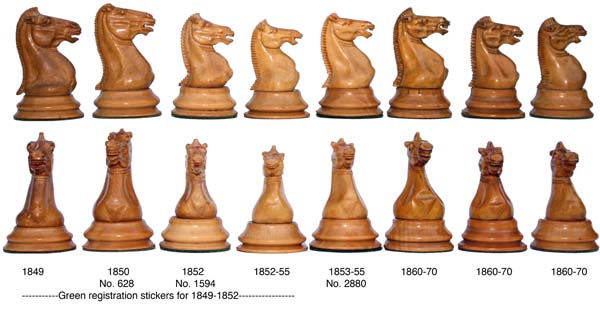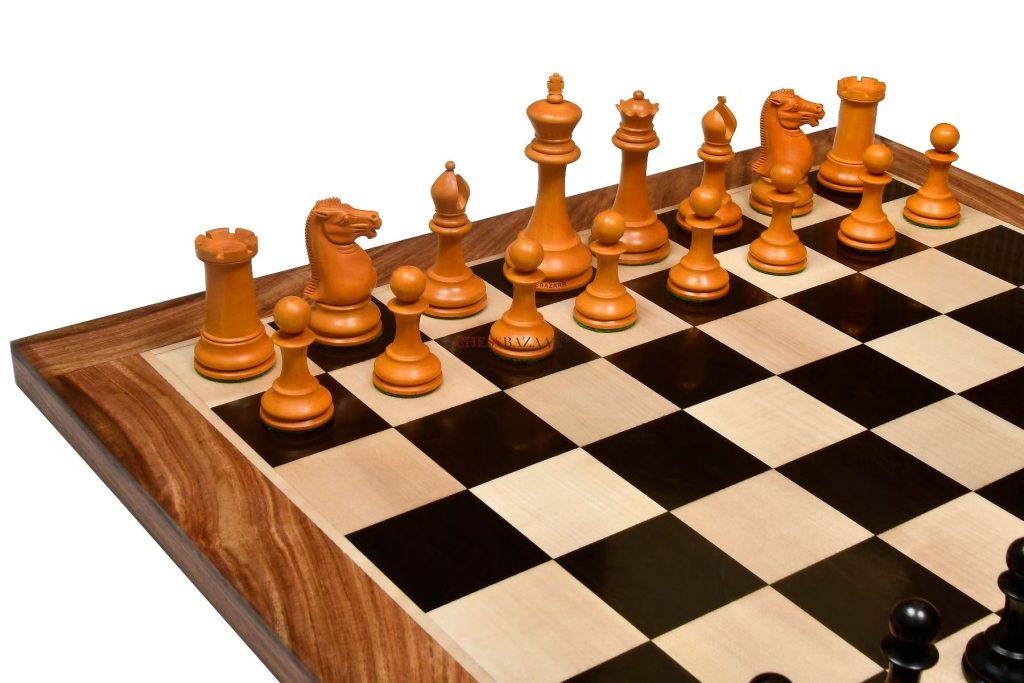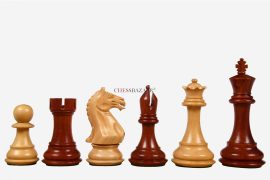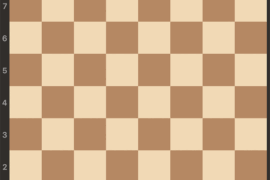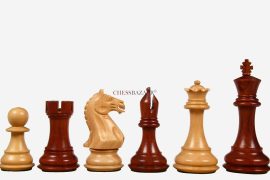When something is not working a loud cry hails for a new invention, this is exactly how world-renowned Staunton chess sets design came into existence, which later became the official international standard.
Staunton chess sets design refer to a particular style of chess pieces that were first introduced by Nathaniel Cook and designed by John Jaques of London in 1849. These pieces are now the standard design for tournament play and are recognized by chess players and enthusiasts worldwide.
The Staunton design features a particular set of distinctive, hand-carved chess pieces with specific characteristics, including a king that is 3.75 inches tall, a queen that is 3.25 inches tall, and knights that are 2.75 inches tall. The pieces are designed to be both functional and aesthetically pleasing, with a simple yet elegant appearance that is easy to distinguish on the board.
The Staunton chess design was named after Howard Staunton, an English chess player, and writer who was regarded as the leading chess player of his time. Staunton was a strong advocate for standardizing the design of chess pieces, and he endorsed the design that now bears his name. The Staunton design quickly became popular and has since become the standard design for chess sets used in tournaments and matches around the world.
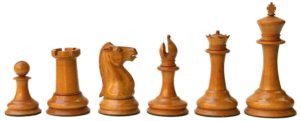 Img1: 3.5″ unweighted set in Carton Pierre Casket 1849 “Cook knights”
Img1: 3.5″ unweighted set in Carton Pierre Casket 1849 “Cook knights”
Problems in Earlier chess sets:
In the first half of the 19th century there were English Barleycorn chess sets, the St. George chess sets, the French Regence chess sets. The problem with existing chess sets was that they were tall with less weight which resulted in falling or tipping of chess pieces while playing the game. Intricate designs, and light weighted chess sets were a turn-off for the players. Another major disadvantage was the similarity of the pieces within a set, player’s unfamiliarity with an opponent’s set could alter the outcome of a game with one wrong move. In addition they had decorative features which made them fragile and created a possibility of breakage.
About Staunton Chess set
The set was revolutionary as it solved most of the problems chess players faced while playing. It didn’t have messy decorative features most likely to damage and also had wide bases. Also, there was lead added the wooden chess pieces for better weight and stability. Made without frills, the Staunton sets were also the low cost which made them accessible to the masses and made them more popular. The style was stable and simple and not at all fragile in any sense.
Some distinct features of Staunton chess pieces:
King being tallest piece, and a cross on his head, Rook’s top shown as a castle, Knight being depicted with a horse head attracted many around the world.
The distinctive features of Staunton chess designs include:
-
Balanced design: The Staunton design features a well-balanced set of chess pieces, with the pieces being proportionate to each other in terms of size and weight.
-
Simplified design: The design is simple yet elegant, with each piece having a distinctive shape and size that is easy to distinguish from the others.
-
Standardized design: The Staunton design has become the standard for tournament play and is recognized by chess players worldwide.
-
King and Queen design: The king and queen are the tallest pieces on the board, with the king standing at 3.75 inches tall and the queen at 3.25 inches tall. They both have a rounded crown, with the king having a cross on top and the queen having a coronet.
-
Knight design: The knight is represented by a horse’s head and neck, with one ear pointing forward and the other pointing backward. The knight is the only piece that can jump over other pieces.
-
Bishop design: The bishop has a mitre-shaped head and a long, narrow body that distinguishes it from the other pieces.
-
Rook design: The rook is represented by a castle-shaped tower, with a crenellated top that gives it a distinctive appearance.
There are 17 variants of the original 1849 Staunton Chess Set classified as follows:
1) Wedgewood chess set (1849)
2) Leuchars chess set (1849)
3) Cooke chess set (1849–1850)
4) Morphy chess set (1851) – characterized by “Morphy” knights, which have pronounced jowls versus other designs of knights
5) Harrwitz chess set (1852–55)
6) Paulsen chess set (1853–1855)
7) Anderssen chess set (1855–65)
8) Steinitz chess set (1865–70)
9) Tarrasch chess set (1870–1875)
10) Zukertort chess set (1875–80)
11) Lasker chess set (1880–85)
12) Pre-Hartston chess set (1885–1890)
13) Hartston chess set (1890–1900)
14) Marshall chess set (1900–15)
15) Broadbent chess set (1925–37)
16) Nimzovitch chess set (1927–1937)
17) Lessing chess set (1927–1937)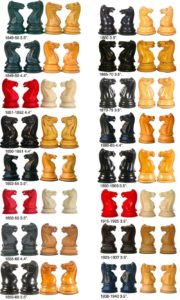 Img2: Group of early and later Jaques knights.
Img2: Group of early and later Jaques knights.
Naming the Revolutionary Chess Set
The Chess design is named after Howard Staunton who was a notable strong chess player at the time. He was an English chess master who is generally regarded as having been the world’s strongest player from 1843 to 1851. Nathaniel Cook (editor in the Illustrated London News) urged & convinced the champion to endorse and give his name to the newly invented chess design, the Staunton Design.
Later, Howard Staunton not only endorsed the product but promoted it to an exceptional degree including the remonstration and ridiculing of any other design of chessmen then proposed. The Staunton style soon became the standard on which most tournament-playing pieces have been made and used around the world ever since. The low cost of the Staunton set allowed the masses to purchase it and helped to give mass appeal to the game of chess.
Today’s Jaques Chess Reproductions
chessbazaar with inputs from famous chess restorer Mr. Alan Dewey have collaborated on a number of reproductions. These reproductions have been applauded by the chess collector community around the world.
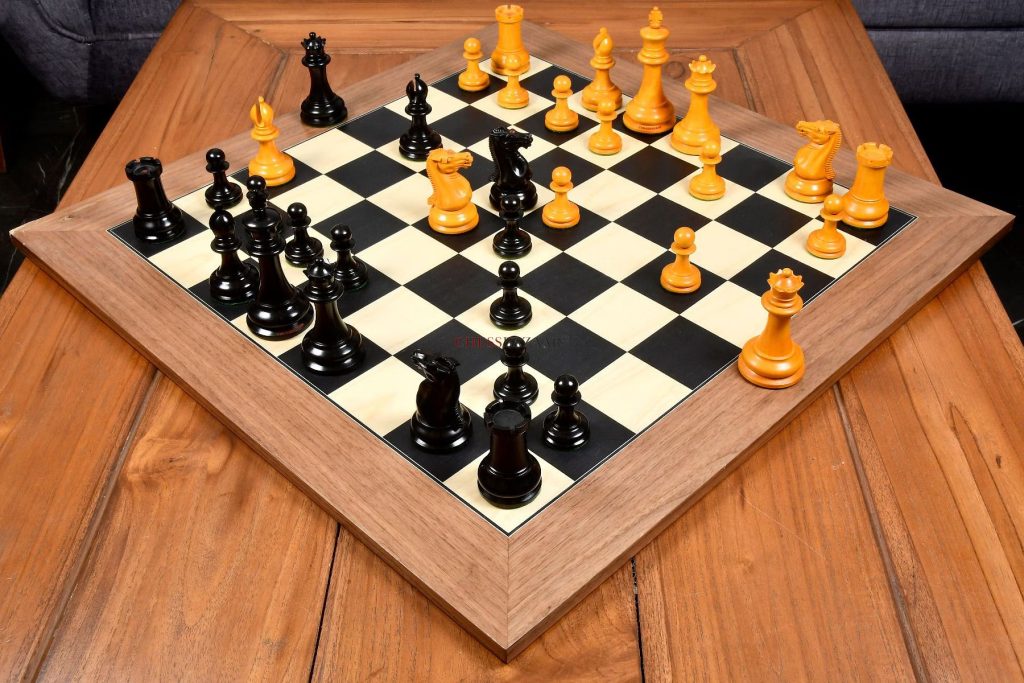
1. 1849 Chess Set Reproduction: chessbazaar is proud to announce the version 3 of 1849 available in three variant, the 4.4″ King size 1849 in an antique finish, the 4.4″ King size 1849 in a red and ivory white finish and the 3.75″ King tournament size 1849 in boxwood and genuine ebony. The knights and rooks of all the variants come with kingside stamping.
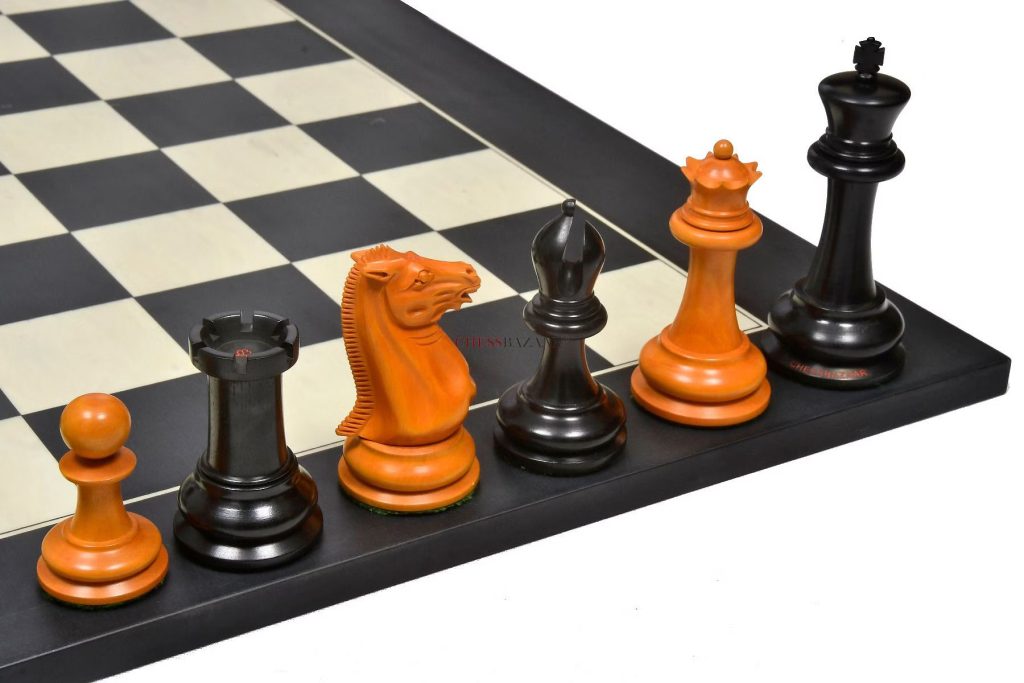
2. Reproduced 1851 Morphy Chess Set: We reproduce 1851 Staunton Pattern Chess Set with “Morphy” knights in 4.4″ king size. A rook and a knight on each side come with kingside stamping which was a norm with Staunton chess sets at that time. All the pieces are heavily weighted which gives them extra stability on the chess board and feels good to hold and play with them. Thick green felt has been fixed on the base of the pieces which protects the board, minimizing noise while playing and looks classy on the rim of the base of pieces. The boxwood has been given antiqued finish by a special secret process which makes the set look like an original time chess set and the set weighs approx 2000 grams.
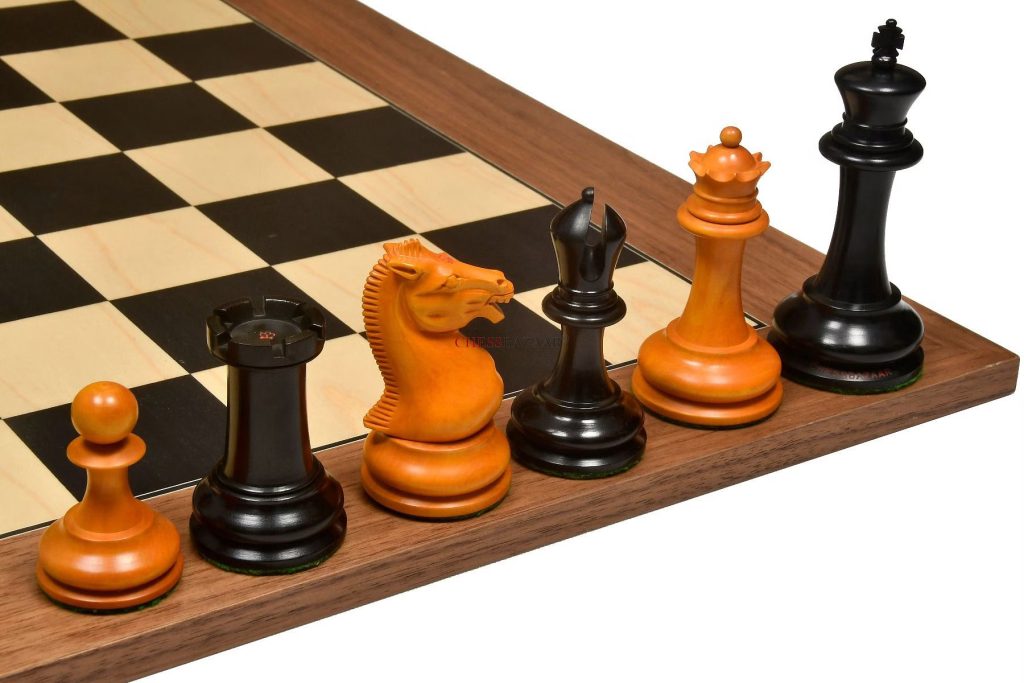
3. Reproduced 1852 Harrwitz Chess Set: The original antique 1852 Harrwitz set in the playable condition is very very hard to find and may cost thousands of dollars if available. Our Repro Circa 1852 Harrwitz Staunton Chess Set is a humble try to bring this legendary design to life and to let chess enthusiasts experience the game with this beautiful chess set which hitherto was not possible. The King proudly stands 4.5″ tall with a base diameter of 2 inches. The set comes with free extra queens for pawn promotion.
Reproduced Antique 1860 Anderssen Drop Jaw Staunton Pattern Chess Pieces
4. Reproduced Antique 1860 Anderssen Drop Jaw Chess Set: The original 1860 Anderssen Drop Jaw Staunton Pattern Chess Set in playable condition is very hard to find and may cost thousands of dollars if available. The King in this set stands 4.5″ tall with a base diameter of 1.8 inches. It comes with antique finish and king-side stamping.
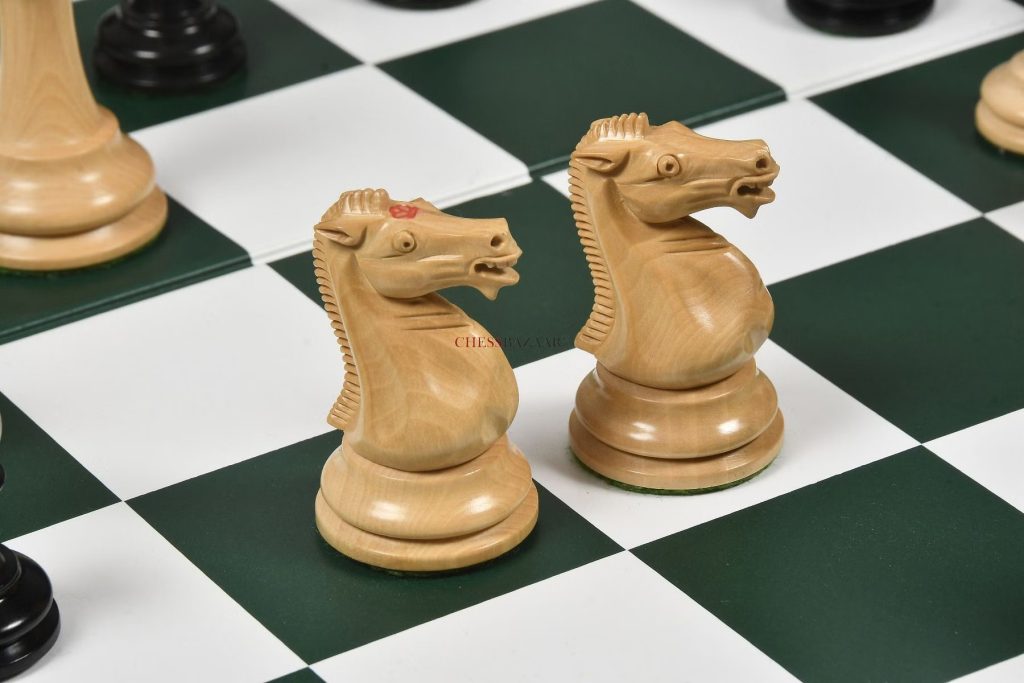
5. Reproduced Antique 1865-70 Steinitz Chess Set: Reproduced Antique 1865-70 Steinitz Staunton Pattern chess set is handcrafted in genuine ebony wood and boxwood. The King is 3.75″ (Tournament Size) with a base diameter of 1.65 inches. The set comes with free extra queens for pawn promotion. Pieces have unique rings and thick green felts.
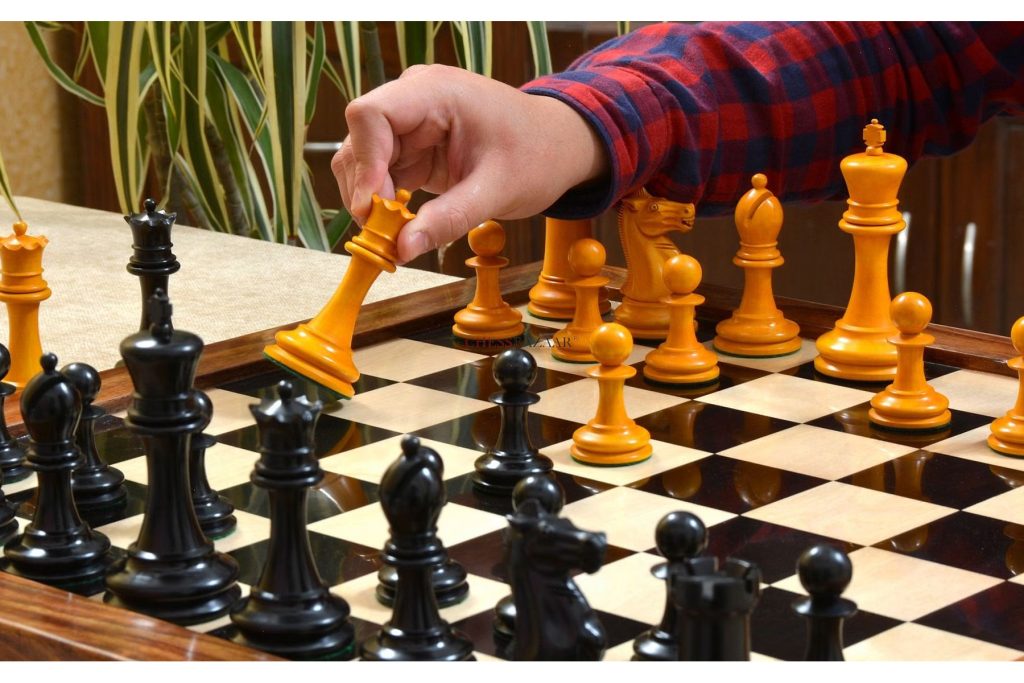
6. Reproduced Antique 1885 Pre-Hartston Chess Set: The reproduction of 1885 comes in 4.4″ King size with antique finish and king-side stamping. The Knights are somewhat similar to the 1900 Marshal knights, vertical miter of the bishops is charming. All chess pieces have a very wide base. The King in the set is 4.5″ tall with a base diameter of 1.92 inches.
7. Reproduced Antique 1900 Marshal Chess Set: Our repro of 1900 Marshal Staunton pattern chess set is a humble try to bring this legendary design to life and to let chess enthusiasts experience the game with this beautiful chess set. Reproduced Antique 1900 Marshal Staunton Pattern chess set is handcrafted in genuine ebony wood and antiqued boxwood. The King is 3.75″ high (Tournament Size) with a base diameter of 1.69 inches. The set comes in Antique finish and king-side stamping.
Did You Know!
Staunton chess sets by Jaques of London are also believed to be used in World War 2 by MI9 (the British Directorate of Military Intelligence Section 9). Chess pieces and sets were hollowed out to hold secrete maps, currency, documents, hacksaw blades and swinger compasses”, constructed to help British and American prisoners of war.
This famous set was made available to common public on September 29, 1849, & is now popularly called “The Staunton” and the rest is history.
In today’s world, available Staunton designs may be fake or of low quality as there are very few people in the industry who can match the finish of Staunton sets, finding the right Staunton chess set may be a little difficult for a new budding chess player. We here at chessbazaar.com provide the exact replicas of Staunton chess designs.
Some Interesting Facts about Staunton Chess Sets
-
The Staunton chess design was named after Howard Staunton, a prominent English chess player and writer who lived in the 19th century. He was a strong advocate for standardizing the design of chess pieces.
-
The original Staunton chess set was designed and manufactured by John Jaques of London in 1849. Jaques was a well-known maker of high-quality games and sports equipment.
-
The Staunton design quickly became popular and is now the standard design for tournament play. The World Chess Federation (FIDE) recommends the use of the Staunton design for official chess tournaments.
-
Staunton chess sets are made from a variety of materials, including wood, plastic, and metal. Some of the most expensive sets are made from rare and exotic materials, such as ivory or ebony.
-
Staunton chess sets have been used in many famous chess matches throughout history, including the famous “Match of the Century” between Bobby Fischer and Boris Spassky in 1972.
-
Some Staunton chess sets are considered works of art and are highly collectible. Rare and antique sets can fetch high prices at auction, with some selling for tens of thousands of dollars.
-
The Staunton design has been adapted for use in many different types of chess sets, including travel sets, magnetic sets, and giant outdoor sets.
Overall, the Staunton chess set is an iconic design that has become synonymous with the game of chess. It has a rich history and continues to be popular among chess players and collectors around the world.
